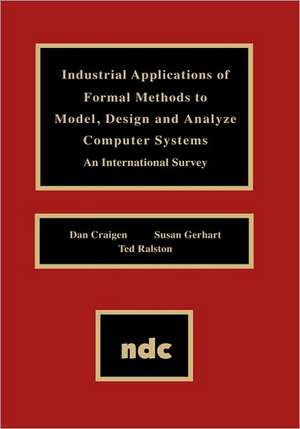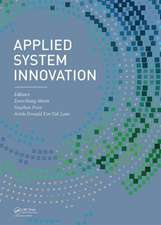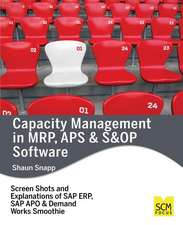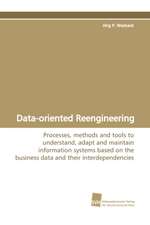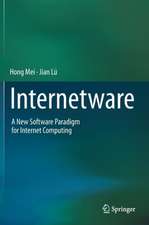Industrial Applications of Formal Methods to Model, Design and Analyze Computer Systems
Autor Dan Craigen, Susan Gerharten Limba Engleză Hardback – 11 feb 1995
Preț: 493.62 lei
Preț vechi: 617.02 lei
-20% Nou
Puncte Express: 740
Preț estimativ în valută:
94.46€ • 98.87$ • 78.62£
94.46€ • 98.87$ • 78.62£
Carte tipărită la comandă
Livrare economică 31 martie-14 aprilie
Preluare comenzi: 021 569.72.76
Specificații
ISBN-13: 9780815513629
ISBN-10: 0815513623
Pagini: 318
Dimensiuni: 178 x 254 x 19 mm
Greutate: 0.77 kg
Editura: ELSEVIER SCIENCE
ISBN-10: 0815513623
Pagini: 318
Dimensiuni: 178 x 254 x 19 mm
Greutate: 0.77 kg
Editura: ELSEVIER SCIENCE
Cuprins
Volume 1 Purpose, Approach, Analysis, and Conclusions 1. An International Survey of Industrial Applications of Formal Methods Introduction 2. Formal Methods 2.1 An Historical Perspective 2.2 What is Formal Methods? 2.3 What are the Limits of Formal Methods? 2.4 Specific Formal Methods 3. Case Summary 3.1 Regulatory Cluster 3.2 Commercial Cluster 3.3 Exploratory Cluster 4. Methodology 4.1 Areas of Interest 4.2 Acquisition of Information 4.3 Questionnaires 4.4 Analytic Framework 4.5 Cluster Analysis 5. Regulatory Cluster Analysis 5.1 Introduction 5.2 Cases 5.3 Observations 5.4 Analysis 6. Commercial Cluster Analysis 6.1 Introduction 6.2 Cases 6.3 Observations 6.4 Analysis 7. Exploratory Cluster Analysis 7.1 Introduction 7.2 Cases 7.3 Observations 7.4 Analysis 8. Key Events and Timing 8.1 Starter 8.2 Booster 8.3 Current State 8.4 Timing 9. Analysis of Formal MEthods R & D Summary 9.1 Regulatory Cluster 9.2 Commercial Cluster 9.3 Overall Observations 10. Findings, Observations and Conclusions 10.1 Maturing of Formal Methods 10.2 Scale of Application 10.3 Primary Uses of Formal Methods 10.4 System Certification 10.5 Tool Support 10.6 Technology Transfer 10.7 Formal Methods Skills are Building 10.8 Code Level Application of Formal Methods 10.9 Inadequate Cost Models 11. ReferencesVolume 2 Case Studies 1. Structured Systems Analysis and Design Method Toolset 1.1 Case Description 1.2 Interview Summary 1.3 Evaluation 1.4 Conclusions 2. IBM's Customer Information Control System 2.1 Case Description 2.2 Questionnaire 1 2.3 Interview Summary 2.4 Evaluation 2.5 Conclusions 3. Cleanroom Software Methodology 3.1 Case Description 3.2 Interview Summary: IBM 3.3 Interview Summary: NASA Goddard Center 3.4 Evaluation 3.5 Conclusions 4. Darlington: Trip Computer Software 4.1 Case Description 4.2 Interview Summary 4.3 Evaluation 4.4 Conclusions 5. LaCoS Esprit Project 5.1 Case Description 5.2 Questionnaire 1 5.3 Interview Summary 5.4 Evaluation 5.5 Conclusions 6. Multinet Gateway 6.1 Case Description 6.2 Interview Summary 6.3 Evaluation 6.4 Conclusions 7. SACEM—A Railway Signalling System 7.1 Case Description 7.2 Questionnaire 1 7.3 KVS 7.4 CTDC Calcutta 7.5 Interview Summary 7.6 Evaluation 7.7 Conclusions 8. NIST Token-Based Access Control System (TBACS) 8.1 Case Description 8.2 Questionnaire 1 8.3 Interview Summary 8.4 Evaluation 8.5 Conclusions 9. Teltronix—Use of Z Method on Oscilloscopes 9.1 Case Description 9.2 Questionnaire 1 9.3 Interview Summary 9.4 Evaluation 9.5 Conclusions 10. Traffic Alert and Collision Avoidance System (TCAS) 10.1 Case Description 10.2 Interview Summary 10.3 Evaluation 10.4 Conclusions 11. INMOS Transputer—Use of Formal Methods in Hardware Verification 11.1 Case Description 11.2 Interview Summary 11.3 Evaluation 11.4 Conclusions 12. Hewlett-Packard Medical Instruments Analytical Information Base (AIB) Component Monitoring System 12.1 Case Description 12.2 Interview Summary 12.3 EvaluationAppendix A: Biographies of AuthorsAppendix B: Formal Methods Techniques B.1 Software Cost Reduction (SCR) B.2 B B.3 Cleanroom B.4 Formal Development Methodology (FDM) B.5 Gypsy Verification Environment B.6 Hoare Logic B.7 Hewlett-Packard Specification Language (HP-SL) B.8 OCCAM/Communicating Sequential Processes (CSP) B.9 RAISE B.10 TCAS Methodology B.11 ZAppendix C: Initial QuestionnaireAppendix D: Questionnaire for Structured InterviewAppendix E: Review CommitteeAppendix F: Acknowledgments
